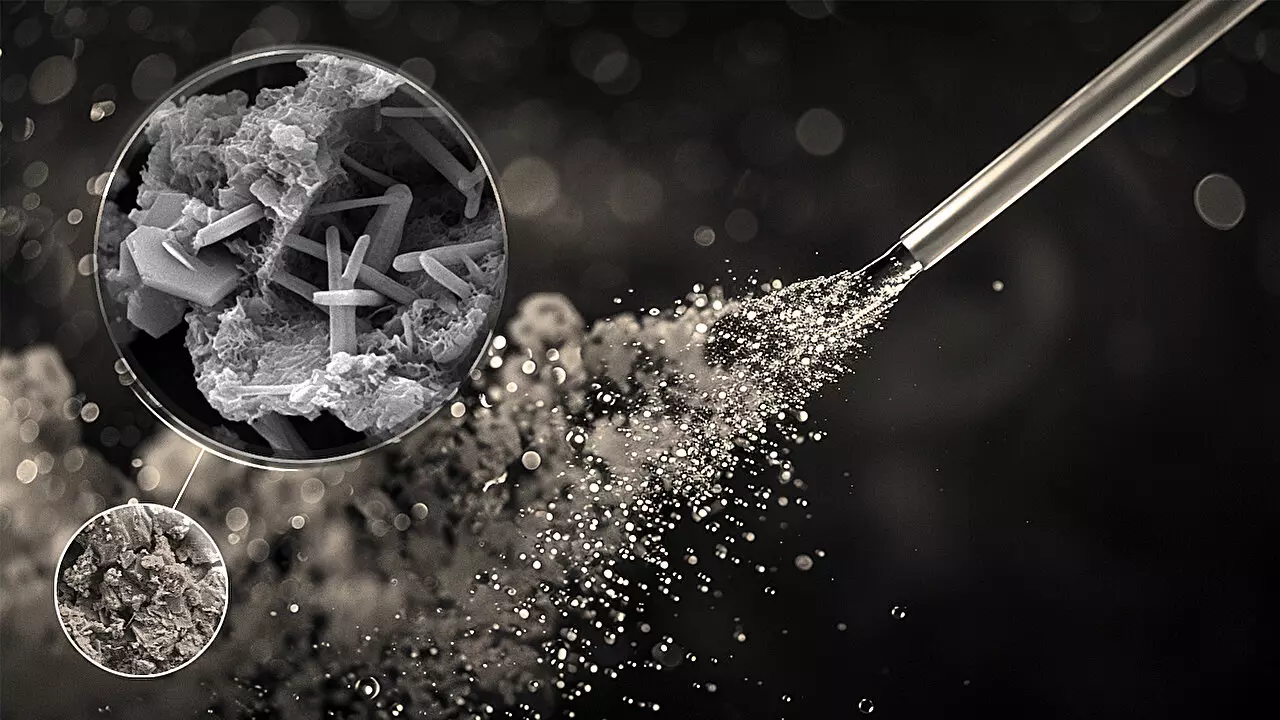The construction industry is at a crossroads, grappling with its substantial contribution to global greenhouse gas emissions. Concrete, engineered from a combination of water, aggregates, and cement, represents a critical component of our infrastructure, yet accounts for a staggering 8% of human-induced CO2 emissions. While concrete may be foundational to our civilization, the environmental cost of its production cannot be overlooked. A recent breakthrough from a team of engineers at Northwestern University has ignited hope by introducing a transformative method for carbon dioxide (CO2) sequestration during the concrete manufacturing process. This innovative approach not only enhances environmental sustainability but also maintains the critical strength and integrity of concrete.
Turning CO2 into a Resource
Rather than merely absorbing CO2 post-production, the Northwestern University team has discovered a method to incorporate CO2 directly into concrete by utilizing a carbonated water-based solution during its creation. This method demonstrates a remarkable CO2 sequestration efficiency of nearly 45%, capturing an impressive portion of the CO2 emitted during the manufacturing process. Led by Alessandro Rotta Loria, the study elegantly articulates the potential of this method for transforming concrete into an environmental asset rather than a liability. The sustainability implications of this research could lead to global shifts in how the concrete and cement industries are regulated and viewed in the fight against climate change.
With this approach, the researchers hope to turn what was once a byproduct of the concrete production into a vital ingredient. This paradigm shift not only helps mitigate the impact of cement production on climate change but also presents an opportunity for the construction industry to engage in a circular economy—where materials previously viewed as waste are reincorporated into production cycles.
Advancing Beyond Traditional Methods
The new method stands apart from existing CO2 sequestration strategies which have historically faced significant limitations. Traditional approaches, including hardened concrete carbonation and fresh concrete carbonation, have struggled with low efficiency and high energy demands. Often, these techniques result in weakened concrete, creating a paradox in sustainability efforts—striving for environmental responsibility while compromising structural integrity.
In stark contrast, the Northwestern researchers sought to revolutionize this paradigm by injecting CO2 into a mixture of water and cement powder before blending it with aggregates. This innovative technique not only facilitates a rapid reaction that leads to increased formation of solid calcium carbonate crystals but also results in a concrete product that demonstrates comparable strength to conventional methods. This is a crucial development; if the concrete can simultaneously serve as a carbon sink while maintaining strength and utility, the potential impact on construction practices could be monumental.
Examining the Strength of Carbonated Concrete
One of the most compelling findings of this study is the reinforcement of concrete strength when employing this carbonated suspension approach. Traditionally, methods of capturing CO2 lead to compromised structural properties, which limits the broad application of carbonated concrete in infrastructure. However, preliminary tests on the newly developed concrete have indicated that its strength remains uncompromised or even enhanced. This revelation is critical, as the integrity of concrete used in beams, foundations, and other essential infrastructure must not be sacrificed for the sake of sustainability.
As noted by co-author Davide Zampini from CEMEX, there is a continuous need to refine our understanding of the mechanisms at play in material processing. It becomes increasingly evident that the construction industry must embrace a nuanced approach to developing carbon-capturing technologies that do not compromise the core functionalities of materials. By integrating CO2 into the concrete production process, we not only bolster the manufacturing process but also advance our understanding of materials chemistry in the context of sustainability.
Looking Forward: The Road to Sustainable Infrastructure
The implications of this research are undeniable; it paves the way for a future where concrete is not only a staple of modern construction but also a vehicle for combating climate change. The pressing question remains: how quickly can this innovative technology be adopted on scales sufficient to make a difference? Various structural elements within the construction industry must work together collaboratively to expedite the transition toward greener practices. Engineering firms, policymakers, and construction enterprises must align objectives to ensure that sustainable methods are incentivized and implemented.
As the planet faces escalating challenges due to climate change, innovations like carbonated concrete could play a transformative role in reshaping our approach to sustainability. The coalescence of technological advancement in concrete production represents a substantial step in addressing the environmental toll of construction while retaining the indispensable qualities that concrete provides. The future of construction holds the promise of marrying durability with environmental responsibility, creating a resilient foundation for generations to come.


Leave a Reply